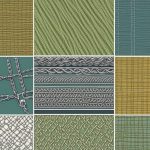Types Of Columns
Columns are an essential structural element in architecture and construction, providing support and stability to buildings and other structures. They have been used for thousands of years, evolving in style and design to meet the needs of different eras and cultures. Today, there are many different types of columns, each with its unique characteristics and applications.
The historical evolution of columns is a fascinating topic that can shed light on the development of architecture and engineering over time. From the ancient Greeks and Romans to the Renaissance and beyond, columns have played a crucial role in the design of buildings and monuments. Understanding the fundamentals of column design, including their shape, size, and materials, is crucial to creating structures that are both functional and aesthetically pleasing.
Architectural orders and styles are another important aspect of columns. The classical orders, including Doric, Ionic, and Corinthian, are still used today in many buildings, while other styles, such as Gothic and Art Deco, have their unique characteristics. Structural mechanics is an essential consideration in column design, with factors such as load capacity, slenderness ratio, and reinforcement playing a crucial role. Finally, modern applications and innovations, such as composite materials and advanced manufacturing techniques, have expanded the possibilities for column design and construction.
Key Takeaways
- Columns have been used for thousands of years and have evolved in style and design to meet the needs of different eras and cultures.
- Understanding the fundamentals of column design, including their shape, size, and materials, is crucial to creating structures that are both functional and aesthetically pleasing.
- Architectural orders and styles, structural mechanics, and modern applications and innovations are all essential considerations in column design and construction.
Historical Evolution of Columns

Columns have been an integral part of architectural design for thousands of years. The evolution of columns can be traced back to ancient civilizations such as Greece, Rome, and Egypt. In this section, we will explore the historical evolution of columns, focusing on two of the most prominent civilizations: Ancient Greece and Rome, and Ancient Egypt.
Ancient Greek and Roman Columns
The Greeks and Romans are known for their impressive architectural achievements, with columns being one of their most recognizable features. The Greeks developed three main orders of columns: Doric, Ionic, and Corinthian. The Doric order is the simplest, with a plain, sturdy design, while the Ionic order is more ornate, with volutes (scrolls) on the capital. The Corinthian order is the most decorative, with acanthus leaves and scrolls adorning the capital.
The Romans adopted the Greek orders of columns but added their own twists. They developed the Tuscan and Composite orders, which were variations of the Doric and Corinthian orders, respectively. The Tuscan order was simpler than the Doric order, with an unadorned shaft and capital. The Composite order combined the acanthus leaves of the Corinthian order with the volutes of the Ionic order.
Egyptian Column Designs
The ancient Egyptians also used columns in their architecture, with designs that were different from those of the Greeks and Romans. Egyptian columns were typically more slender and had a lotus or papyrus-inspired capital. These columns were often decorated with hieroglyphics and other intricate designs.
One of the earliest examples of Egyptian columns can be found in the Temple of Karnak, which was built in the 16th century BCE. The columns in this temple were made of sandstone and had a lotus-inspired capital. Another example is the Temple of Luxor, which was built in the 14th century BCE. The columns in this temple were made of red granite and had a papyrus-inspired capital.
In conclusion, columns have come a long way since their inception in ancient civilizations. From the simple, sturdy designs of the Doric order to the ornate, decorative designs of the Corinthian order, columns have played an important role in architectural design throughout history.
Fundamentals of Column Design
Column Types and Shapes
Columns are vertical structural elements that transfer loads from the beams and slabs to the foundations. They are used in various structures such as buildings, bridges, and towers. The design of columns depends on the type and shape of the column, as well as the materials used in their construction.
There are different types of columns based on their shape, such as circular, square, rectangular, L-shaped, T-shaped, and spiral columns. The circular column is commonly used in buildings and bridges because of its aesthetic appeal. The square and rectangular columns are also popular due to their simplicity in construction and design. L-shaped columns are used in corners of boundary walls, while T-shaped columns are used in structures that require additional support.
Spiral columns are used in structures where architectural aesthetics are important. The spiral shape provides a unique and visually appealing appearance. The design of spiral columns is more complex than other column types, and they require additional reinforcement to resist the torsion forces.
Materials and Construction
Columns can be made of various materials such as concrete, steel, brick, and stone. The choice of material depends on the type of structure, load-bearing capacity, and design requirements. Concrete is the most commonly used material for columns in buildings and bridges. Reinforced concrete columns are designed to resist compressive and bending forces, and they are reinforced with steel bars.
Steel columns are used in high-rise buildings and structures that require high strength and durability. They are easy to install and require less maintenance than other column types. Brick and stone columns are used in historical buildings and structures that require a traditional and authentic appearance.
The construction of columns involves several steps such as formwork, reinforcement, and casting. The formwork is used to create the shape of the column, while the reinforcement provides additional strength and support. The casting process involves pouring the concrete or other materials into the formwork and allowing it to cure.
In conclusion, the design of columns depends on various factors such as the type and shape of the column, materials used in construction, and design requirements. The choice of material and construction method should be based on the load-bearing capacity and design specifications.
Architectural Orders and Styles
Architectural orders refer to the distinct styles of classical architecture, each distinguished by its proportions, profiles, and details. The orders are most readily recognizable by the type of column employed. Architects have used these styles throughout history, and they continue to inspire modern structures and buildings.
Doric, Ionic, and Corinthian Orders
The three most well-known orders are the Doric, Ionic, and Corinthian. The Doric order is the simplest, with a plain, sturdy column and a simple capital. The Ionic order features more ornate capitals with volutes, or spiral scrolls. The Corinthian order is the most elaborate, with highly decorative capitals featuring acanthus leaves and scrolls.
Each order has its own distinct proportions and details, which architects use to create a specific look and feel. For example, the Doric order is often used to create a sense of strength and stability, while the Corinthian order is used for a more ornate, luxurious look.
Tuscan and Composite Columns
In addition to the three main orders, there are also the Tuscan and Composite columns. The Tuscan column is a simplified version of the Doric order, with a plain, unadorned column. The Composite column is a combination of the Ionic and Corinthian orders, with a capital featuring both volutes and acanthus leaves.
Architects use these orders and styles to create a range of classical and neoclassical designs, from grand public buildings to private residences. By selecting the appropriate column style and order, architects can create a sense of grandeur, strength, elegance, or simplicity, depending on the desired effect.
Overall, the orders and styles of classical architecture continue to inspire and inform modern design, and they remain an essential part of the architect’s toolkit.
Structural Mechanics of Columns
Columns are vertical structural elements that transmit axial loads and support the weight of the structure above them. The design of columns is critical to the stability of the structure. The structural mechanics of columns can be divided into two main categories: load-bearing and compression, and buckling and slenderness.
Load-Bearing and Compression
Columns are primarily designed to resist compressive loads. The compressive strength of a column depends on its cross-sectional area, material properties, and effective length. The effective length of a column is the distance between its points of lateral support. Columns with longer effective lengths are more prone to buckling failure.
The axial load-carrying capacity of a column is determined by its cross-sectional area and material properties. The axial load capacity of a column can be increased by increasing its cross-sectional area or by using a stronger material.
Buckling and Slenderness
Buckling is a failure mode that occurs when a column is subjected to compressive loads that exceed its critical buckling load. The critical buckling load is affected by the column’s slenderness ratio, which is the ratio of its effective length to its least lateral dimension.
Columns with larger slenderness ratios are more prone to buckling failure. To prevent buckling, the slenderness ratio of a column should be kept below a certain limit. The limit depends on the material properties, cross-sectional area, and effective length of the column.
In summary, columns are critical components of a structure that must be designed to resist compressive loads and prevent buckling failure. The design of columns must take into account the material properties, cross-sectional area, effective length, and slenderness ratio of the column.
Modern Applications and Innovations
Contemporary Column Materials
With the advancement of technology and engineering, modern columns have come a long way from the traditional materials like stone and wood. Nowadays, construction companies and architects are utilizing a wide range of materials for column construction, including steel, concrete, and composites. Steel columns, in particular, have become a popular choice for modern architecture due to their exceptional strength and flexibility.
In addition, composite materials like fiber-reinforced polymers (FRPs) are also gaining popularity in column construction. FRPs are lightweight, corrosion-resistant, and can be easily molded into different shapes, making them ideal for creating complex column designs.
Aesthetic and Functional Integration
Modern columns are not only functional but also serve as a design element in contemporary architecture. Architects are now integrating columns into the overall aesthetic of the building, creating a more cohesive and visually appealing design.
For instance, in public buildings, grand columns are often used to create a sense of grandeur and authority. In contrast, in residential homes, columns are used to create a more welcoming and homey feel.
Moreover, columns are also used for functional purposes, such as reinforcement. Longitudinal reinforcement is commonly used in column construction to provide additional strength and stability.
In conclusion, modern columns have come a long way from their traditional counterparts. With the use of innovative materials and designs, architects and construction companies are creating functional and aesthetically pleasing columns that enhance the overall design of the building.






